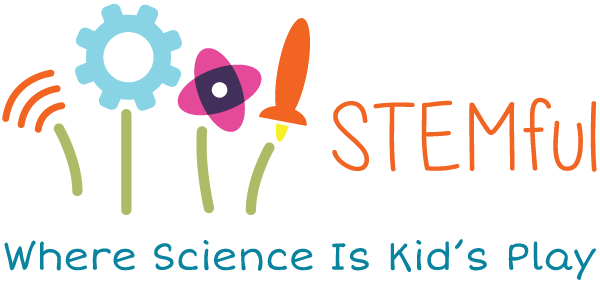
Summer break is here, and now is the perfect time to help your kids get interested in STEM before the new school year begins. We’ve compiled a list of ten of STEMful favorite children’s books to get you started, from general science topics to profiles of inspiring figures in the field, to basic anatomy for kids. Visit your local library or pick them up at your favorite indie bookstore.
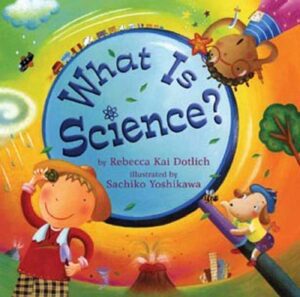
1. What Is Science?, by Rebecca Kai Dotlich, illustrated by Sachiko Yoshikawa; Henry Holt, 2006; ages 2–7.
Subject: General Science
Why We Love It: This vividly illustrated rhyming picture book helps kids learn about different disciplines in the natural sciences (minus chemistry), including paleontology, astronomy, and geology.
Discussion Questions: What scientific field is your favorite and why? Bonus: Choose another book from this list for further reading to explore more about the topic.
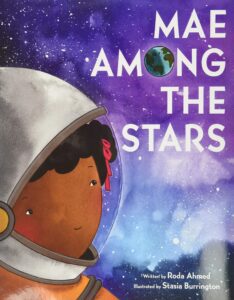
2. Mae Among the Stars, by Roda Ahmed; Harper, 2018; ages 4–8.
Subject: Astronomy / Biography
Why We Love It: A profile of Mae Jemisin, the first Black woman to go into space, will inspire kids and excite young readers about the possibility of reaching places beyond our world with a passion for science.
Discussion Questions: Which part of Mae’s story was your favorite and why? Would you like to go to space someday? Why or why not?
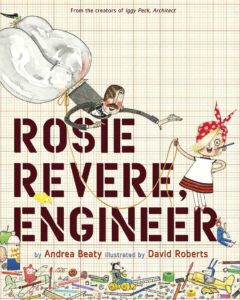
3. Rosie Revere, Engineer, by Andrea Beaty, illustrated by David Roberts; Abrams Books for Young Readers, 2013; ages 4–10
Subject: Engineering
Why We Love It: This story of a shy girl who grows up to become an intrepid and inventive engineer and overcomes failed experiments will delight kids as they follow her path as she develops confidence. Detailed illustrations of contraptions she builds from trash offer a sustainability lesson.
Tips for Discussion: Rosie’s cheese hat doesn’t turn out the way she hoped. Was there ever a time when you tried something and it didn’t work out the way you wanted? What did you learn? Did you try again?
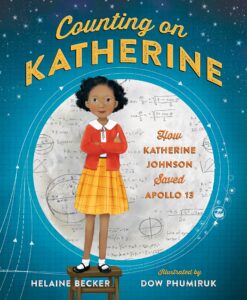
4. Counting on Katherine: How Katherine Johnson Saved Apollo 13, by Helaine Becker, illustrated by Dow Phumiruk; Henry Holt, 2018; ages 5–9.
Subject: Mathematics / Astronomy / Biography
Why We Love It: Kids will cheer for Katherine Johnson as Helaine Becker charts Johnson’s path from genius math student to a NASA mathematician who made history for her heroic role in calculating the moon landings for Apollo 13.
Discussion Questions: Katherine Johnson knew she loved math from an early age. What school subject do you like most? Are there any jobs you can imagine doing someday? How could math and counting help you?
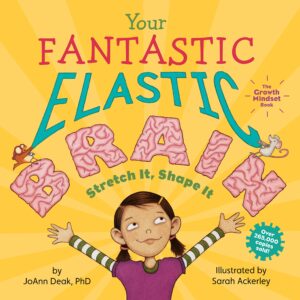
5. Your Fantastic Elastic Brain: Stretch It, Shape It, by JoAnn Deak, illustrated by Sarah Ackerley; Little Pickle Press, 2010; ages 4–10
Subject: Human Biology / Anatomy
Why We Love It: While Your Fantastic Elastic Brain begins by showing kids what the brain looks like, with helpful labels to describe each part, it offers more than a simple anatomy lesson. The book explains what the brain does, and by comparing it with other parts of the body, illustrates how kids’ learning can grow the brain and make it stronger.
Discussion Questions: Can you name all the parts of the brain? What does each part do? Does learning new things help the brain grow? Why or why not?
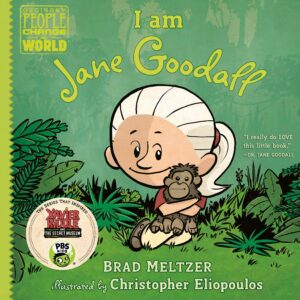
6. I Am Jane Goodall, by Brad Meltzer, illustrated by Christopher Eliopoulos; Ordinary People Change the World (series); Dial Books for Young Readers, 2016; ages 5–8.
Subject: Biological Science / Biography
Why We Love It: Noted primatologist Jane Goodall is the subject of this comic book–style picture book that details young Jane’s love of animals from an early age that grew into her groundbreaking work with chimpanzees.
Discussion Questions: Young Jane was interested in all sorts of animals and learned from the ones that lived near her home, including earthworms and chickens. Which animals live near you? How might you observe them?
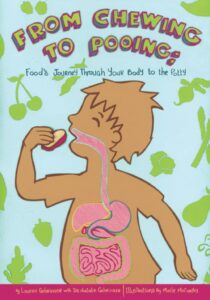
7. From Chewing to Pooing: Food’s Journey Through Your Body to the Potty, by Lauren Gehringer with Natalie Gehringer, illustrated by Maile McCarthy; self-published, 2019; ages 4–10
Subject: Human Biology / Anatomy
Why We Love It: Using rhyme and bright, stylized illustrations, From Chewing to Pooing takes the mystery out of a basic biological function by following the path of a morsel of food through the body. It’s also recommended by potty-training experts!
Discussion Questions: Name the parts of the body that help you digest food. Choose one and explain what that part does.
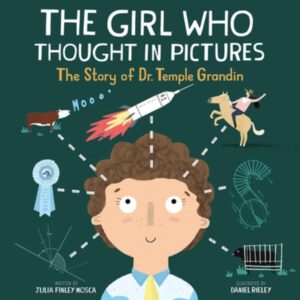
8. The Girl Who Thought in Pictures: The Story of Dr. Temple Grandin, by Julia Finley Mosca, illustrated by Daniel Rieley; Innovation Press, 2017; ages 4–10
Subject: Biological Science / Biography
Why We Love It: The Girl Who Thought in Pictures teaches kids to embrace being different through the inspiring story of scientist Temple Grandin, who overcame her struggles with autism and used her difference to become a noted animal behaviorist. The book ends with a note from Grandin reminding young readers to learn from their mistakes, pursue their own scientific experiments, and explore art.
Discussion Questions: Temple Grandin knew she was different from an early age. Did being different help her become a scientist? Why or why not?
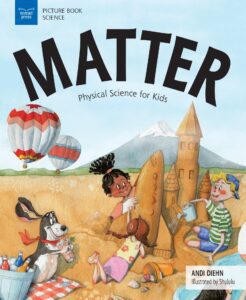
9. Matter: Physical Science for Kids, by Andi Diehn, illustrated by Hui Li; Physical Science for Kids (series); Nomad Press, 2018; ages 5–8.
Subject: Physics
Why We Love It: This beautifully illustrated book helps make one building block of physics easy for kids to understand. With plenty of comparisons to real-life situations where readers might encounter matter, to other definitions of matter (“That doesn’t matter!”), Diehn’s book simplifies a complex topic and prepares children for further learning.
Discussion Questions: What is matter? Can you point to some examples all around us? What does matter do?
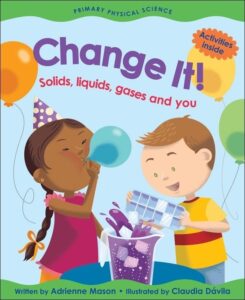
Change It!: Solids, Liquids, Gases and You, by Adrienne Mason, illustrated by Claudia Dávila; Primary Physical Science (series); Kids Can Press, 2006; ages 4–7.
Subject: Physics
Why We Love It: Physics can be a challenging subject for young children, but Change It! helps demystify it with fun activities kids can do to learn more about different states of matter. Includes a parents’ and teachers’ guide.
Discussion Questions: What is matter? What are the three forms of matter? Choose an experiment to try.
Interested in more STEM and STEAM educational opportunities for your kids during summer break? Sign them up for one of our STEMful summer programs. Check out our weeklong camps, or try us out with a drop-in day! Summer programs are available for kids ages 3.5 to 9.5.
